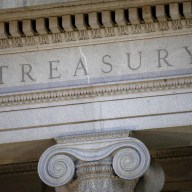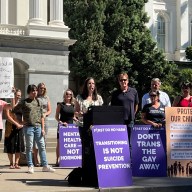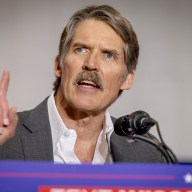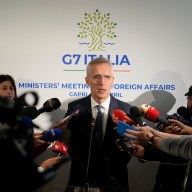By Lucia Mutikani
WASHINGTON (Reuters) – The U.S. economy unexpectedly maintained a brisk pace of growth in the third quarter as an increase in inventory investment and a smaller trade deficit offset a hurricane-related slowdown in consumer spending and a decline in construction.
Gross domestic product increased at a 3.0 percent annual rate in the July-September period, also supported by strong business spending on equipment, the Commerce Department said on Friday. With inventories, goods yet to be sold, contributing almost three-quarters of a percentage point to growth last quarter, the increase in GDP overstates the economy’s health.
Excluding inventory investment, the economy grew at a 2.3 percent rate, slowing from the second quarter’s 2.9 percent pace. A measure of domestic demand also decelerated to a 2.2 percent growth rate from the April-June period’s 3.3 percent pace.
“This is a positive report for an economy that was battered by two hurricanes late in the quarter but it is not as strong as the headline 3.0 percent growth might suggest,” said John Ryding, chief economist at RDQ Economics in New York.
The economy grew at a 3.1 percent pace in the second quarter. It was the first time since 2014 that it experienced growth of 3 percent or more for two quarters in a row. Economists had forecast GDP increasing at a 2.5 percent rate in the third quarter.
The government said while it was impossible to estimate the overall impact of hurricanes Harvey and Irma on third-quarter GDP, preliminary estimates showed that the back-to-back storms had caused losses of $121.0 billion in privately owned fixed assets and $10.4 billion in government-owned fixed assets.
Harvey and Irma struck parts of Texas and Florida in late August and early September. Hurricane Maria, which destroyed infrastructure in Puerto Rico and the Virgin Islands, had no impact on third-quarter GDP growth as the islands are not included in the United States’ national accounts.
Post-hurricane labor market, retail sales and industrial production data already show an acceleration in underlying economic activity. Economists expect the Federal Reserve will increase interest rates for a third time this year in December.
“Fed officials will be encouraged by both the overall performance and the composition of growth in the third quarter, which confirms the U.S. economic expansion remains on solid ground,” said Michelle Girard, chief U.S. economist at NatWest Markets in Stamford, Connecticut.
The dollar rose to a three-month high against a basket of currencies on the data. Prices for U.S. Treasuries fell, with the yield on the interest rate sensitive two-year note touching a fresh nine-year high. U.S. stocks were trading mostly higher.
The economic recovery since the 2007-2009 recession is now in its eighth year and showing little signs of fatigue. The economy is being powered by a tightening labor market, which has largely maintained a strong performance that started during former President Barack Obama’s first term.
Though U.S. stocks have risen in anticipation of President Donald Trump’s tax reform, the administration has yet to enact any significant new economic policies. Trump wants big tax cuts and fewer regulations to boost annual GDP growth to 3 percent.
INVENTORY BOOST
Businesses accumulated inventories at a $35.8 billion pace in the third quarter, leading to inventory investment adding 0.73 percentage point to third-quarter GDP growth. Inventories contributed just over a tenth of a percentage point to output in the prior period. Economists expect a modest boost from inventories in the fourth quarter.
Though export growth slowed in the last quarter, that was eclipsed by the steepest pace of decline in imports in three years, leaving a smaller trade deficit, which added four-tenths of a percentage point to GDP growth. Trade has contributed to output for three quarters in a row.
Business investment in equipment rose at an 8.6 percent rate, increasing for a fourth straight quarter. Growth in consumer spending, which accounts for more than two-thirds of the U.S. economy, slowed to a 2.4 percent rate as hurricanes Harvey and Irma hurt incomes.
Consumer spending rose at a robust 3.3 percent pace in the second quarter and is likely to accelerate in the fourth quarter with a separate report on Friday showing consumer sentiment holding at lofty levels in October.
Despite the moderation in consumer spending, inflation perked up in the third quarter, likely as a result of disruptions to the supply chain caused by the hurricanes.
The Fed’s preferred inflation gauge, the personal consumption expenditures (PCE) price index excluding food and energy, increased at a 1.3 percent rate. That followed a 0.9 percent pace of increase in the second quarter.
With inflation rising, income at the disposal of households increased at a 0.6 percent rate, braking sharply from the second-quarter’s strong 3.3 percent pace.
Investment in nonresidential structures fell at a 5.2 percent pace in the third quarter, the biggest drop in nearly two years, as spending on mining exploration, wells and shafts grew at only a 21.7 percent rate, a sharp deceleration from the second-quarter’s 116.3 percent pace.
Investment in homebuilding, which was already undermined by land and labor shortages, contracted for a second consecutive quarter. Government investment recorded its third straight quarterly decline
“While hurricane effects are hard to parse out of the GDP data, we anticipate rebuilding efforts will lift residential investment out of the doldrums it has occupied the last two quarters,” said Michael Feroli, an economist at JPMorgan in New York.
(Reporting by Lucia Mutikani; Editing by Andrea Ricci)

















